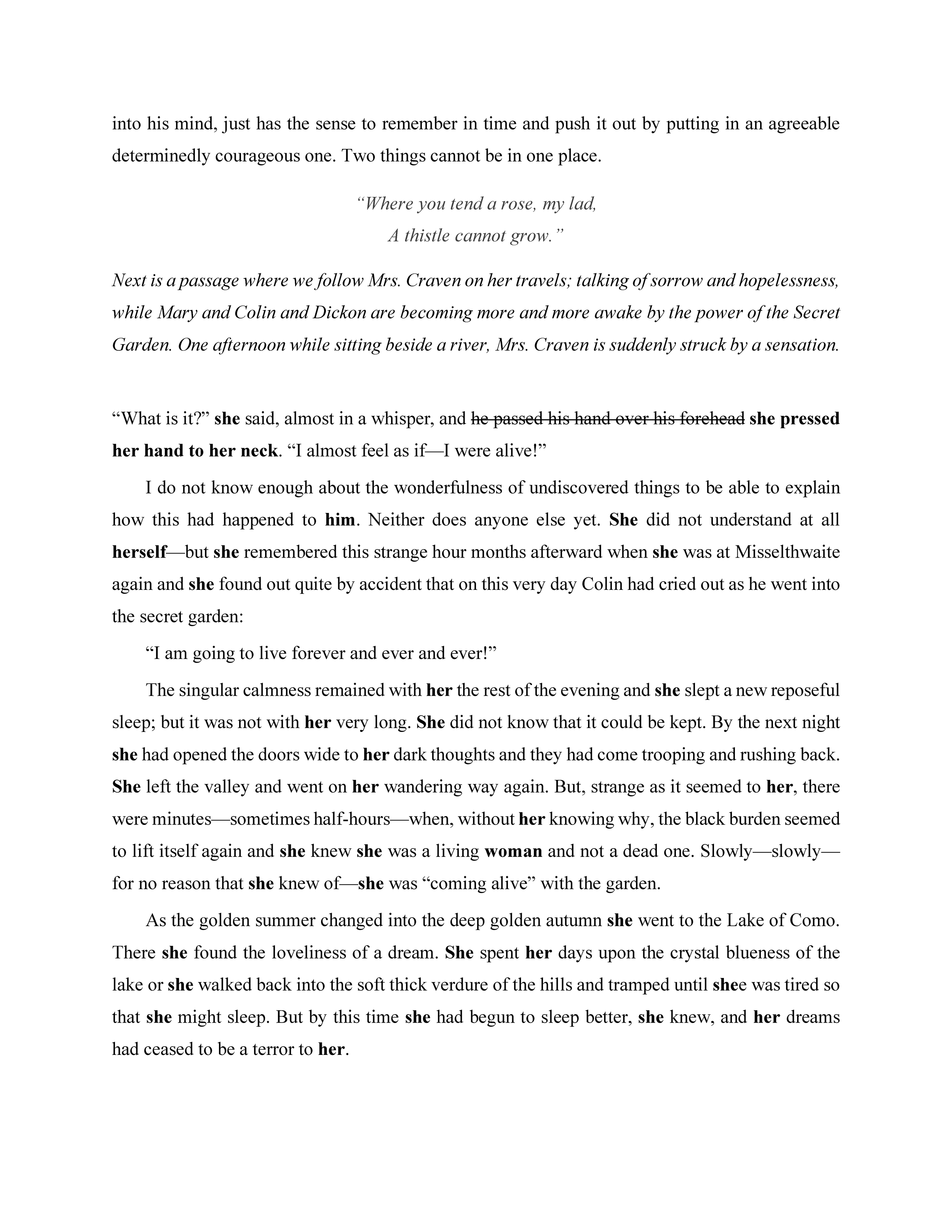The Secret Garden Re-edit
[ thuh see-krit gahr-dn ree-ed-it]
noun
1 : a “what if” scenario involving switching two prominent characters in the classic novel The Secret Garden by Frances Hodgson Burnett—the deceased Lilias Craven for the living, grumpy, Archibald Craven
2 : edited in 2021 as a Literary Editing & Publishing project
3 : the reason some may come after me with pitchforks
editor memo
[ ed-i-ter mem-oh ]
-
My History with the Book
I own three different editions of The Secret Garden (four, if you’re counting digital).
The first time I read it, I was slightly over the intended age-group, but I loved it regardless; the whimsy, the protagonist with many faults, the idea of having a secret place to bring back to life—as a young person with an overactive imagination, I subscribed to these ideas immediately.
Through the years, every time I’ve picked up another beautiful edition (unregretfully proving my lack of self-control), I’ve read the story again, and it wasn’t until adulthood—or thereabouts—that I took a greater notice in the relationships between child and parent. Maybe because I was into the realm where I should start thinking about having children myself, or the fact that I was old enough to see the faults in my own relationships with my parents, I finally began to appreciate Burnett’s delicate approach to such a sensitive issue.
This peaked an interest, which led to a “what if?” and landed on a major edit which would definitely be considered blasphemous—and we’ll be exploring that.
-
Frances Hodgson Burnett
Frances Hodgson Burnett herself: Born in 1849 in Manchester, England. At 16, she began her writing career by submitting to magazines, and bounced back and forth between America and Europe most of her life. Burnett also knew of loss; she lost both parents and her eldest son before she was even 50. In addition, she went through two husbands before settling down in NYC, where she died at age 74. As a tribute to her memory, a statue of Mary and Dickon was erected in Central Park, where it still stands today.
What really stands out is her incorporation of theologies on nature and the power of positive thinking—which is so prevalent in The Secret Garden . The garden heals the children, while it’s made to look like they’re the ones healing it. They also call upon “Magic” which is just a child’s way of manifesting what they desperately want to happen—for Mr. Craven to come home. What breaks my heart is that Burnett often based characters on her own children. She struggled with depression throughout her life, and by writing she was able to channel dark thoughts into something positive—a therapeutic process many writers can relate to.
-
Scope
The story isn’t broken by any means. My version isn’t a fix. When I decided to switch out Archibald Craven for Lilias Craven, it wasn’t because I thought it would make the story somehow “better.” It’s because I truly believe the relationship between mother and child, specifically in the events of an abandonment, are vastly under-represented.
Even today, it appears inherently unacceptable that a mother ignore or neglect her child, while somehow being expected of some fathers. Burnett does such a compelling job of explaining loss in the story for children to understand, that I wanted to try my hand at taking it a step further.
I edited two chapters of the book: 12 and 27.
Chapter 12
Chapter 27
Works Cited
Bauer, Patricia, and Cathy Lowne. “The Secret Garden.” Encyclopedia Britannica, 2020, https://www.britannica.com/topic/The-Secret-Garden.
“Biography of Frances Hodgson Burnett.” The Literature Network, http://www.online-literature.com/burnett/.
“Burnett Memorial Fountain.” Central Park in Bronze, https://www.centralparkinbronze.com/burnett-fountain-secret-garden.
“Frances Hodgson Burnett.” NNDB, 2019, https://www.nndb.com/people/576/000031483/.
Hughes, Kathryn. “Gender Roles in the 19th Century.” British Library, 2014, https://www.bl.uk/romantics-and-victorians/articles/gender-roles-in-the-19th-century.
Keyser, Elizabeth Lennox. “‘Quite Contrary’: Frances Hodgson Burnett's The Secret Garden.” Children's Literature, vol. 11, no. 1, 1983, pp. 1–13., https://doi.org/10.1353/chl.0.0636.




















